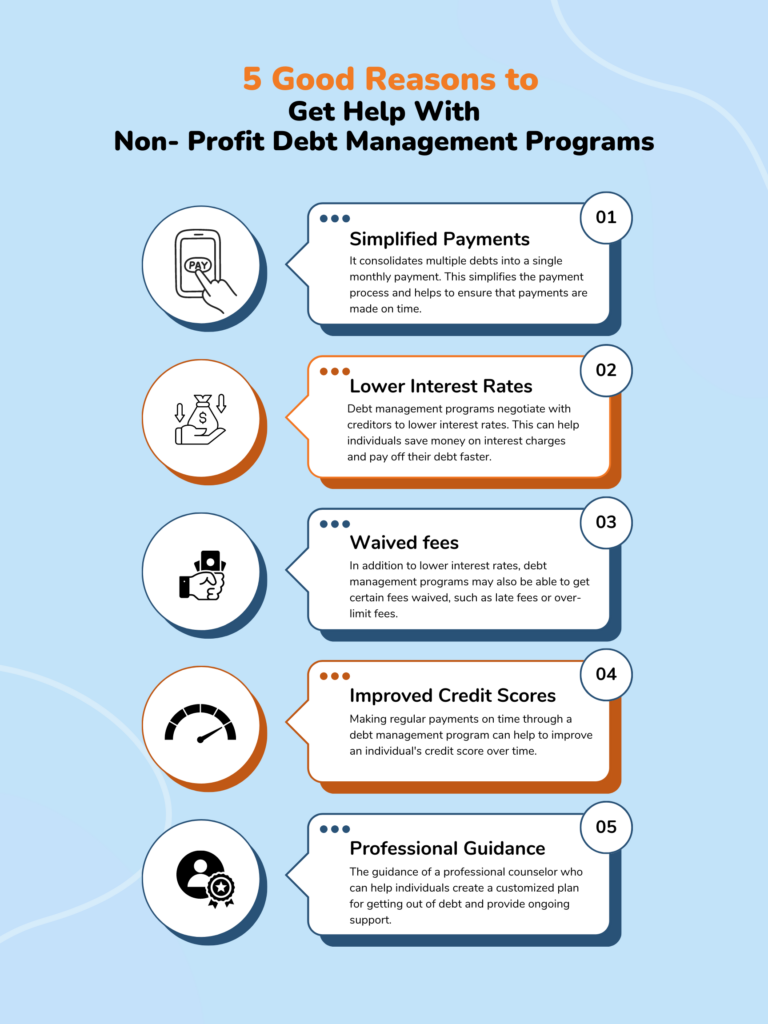Whatever You Need to Learn About Creating a Tailored Financial Debt Administration Plan
In the realm of personal financing, devising a tailored financial obligation management strategy is often the cornerstone of accomplishing monetary security and peace of mind. As you browse the intricacies of developing a tailored financial obligation administration plan, recognizing the details of each step is crucial to your financial success.
Evaluating Your Existing Financial Obligation Situation
One should first carry out a thorough assessment of their present financial obligation responsibilities before developing an effective financial debt monitoring strategy. Produce a comprehensive list of each debt, consisting of the complete amount owed, rate of interest rates, minimum monthly payments, and due days.
After assembling this info, calculate your total debt-to-income proportion by splitting your regular monthly financial obligation repayments by your monthly earnings. This ratio is a vital sign of your ability to take care of present debt degrees successfully. In addition, analyze your credit report to identify any mistakes or discrepancies that might be impacting your credit report. Recognizing these aspects of your financial situation will assist you in developing a personalized debt administration strategy customized to your details requirements and goals.
Setting Financial Goals and Targets

When setting economic objectives, it's crucial to be certain, quantifiable, attainable, relevant, and time-bound (CLEVER) For example, you may establish an objective to settle a particular quantity of financial debt within a specific time structure, such as reducing your bank card equilibrium by $5,000 in the following twelve month - More Discussion Posted Here. By establishing clear targets like this, you can track your progress and stay encouraged to accomplish your financial debt management objectives
In addition, consider prioritizing your debts based on variables such as rates of interest, outstanding equilibriums, and repayment terms. By concentrating on high-interest financial debts first, you can conserve cash over time and accelerate your trip towards financial flexibility. Bear in mind, each person's financial situation is special, so customize your targets and goals to fit your private needs and scenarios.
Developing a Realistic Spending Plan
Crafting a distinct budget plan is an essential action in reliable debt administration and monetary planning. A sensible spending plan works as a roadmap for your economic health, aiding you track your revenue, expenditures, and debt payments. To produce a sensible spending plan, start by providing all your income sources. This includes your salary, side hustle incomes, or any kind of various other financial inflows. Next off, catalog all your taken care of expenditures such as rental fee or mortgage, energies, insurance, and car loan repayments. Variable expenses like groceries, entertainment, and transportation should additionally be included. Separate between requirements and desires to prioritize necessary expenditures and identify areas where you can reduce back.
Regularly evaluation and readjust your budget as needed to remain on track with your economic goals and financial obligation settlement plan. By adhering to a realistic budget plan, you can properly manage your financial debt and job towards a much more safe economic future.
Exploring Financial Obligation Settlement Techniques
After establishing a sensible spending plan, the following crucial step in efficient financial debt management is to explore various financial obligation payment methods. One usual approach is the snowball method, where you focus on settling the tiniest debts initially while making minimal settlements on larger financial debts. This approach can assist construct energy as you see smaller sized financial obligations being removed, supplying inspiration to deal with larger here are the findings ones.
One more approach is the avalanche approach, which includes focusing on financial obligations with the highest rates of interest. By targeting high-interest debts initially, you can decrease the overall amount you pay in passion with time. This approach might be a lot more cost-efficient over time, despite the fact that it might take longer to see private debts fully settled.
Financial debt combination is one more alternative where you integrate multiple financial debts right into a single lending with a reduced rate of interest. This can streamline your payment process and potentially minimize the total rate of interest paid. However, it's important to carefully take into consideration the charges and terms connected with combination to ensure it's the appropriate option for your financial circumstance.
Tracking and Changing Your Strategy
:max_bytes(150000):strip_icc()/DebtRelief-TaxSCImage1-cff6f7bdca724678a200556285996221.png)
Changing your plan may entail reapportioning funds to tackle high-interest debts first, discussing with lenders for lower rates of interest or much better settlement terms, or discovering added revenue sources to quicken financial obligation settlement. As your economic scenario advances, your financial debt monitoring strategy must adjust as necessary to stay efficient. By remaining positive and adaptable in tracking and changing your strategy, you can enhance your initiatives in the direction of repaying your financial debts effectively and accomplishing your monetary goals.
Final Thought
Finally, producing a tailored financial debt monitoring strategy includes analyzing current debt, establishing economic objectives, producing a realistic budget, checking out settlement strategies, and surveillance and changing the strategy as required. By complying with these steps, people can take control of their monetary situation and job towards ending up being debt-free. It is important to remain disciplined and dedicated to the plan in order to accomplish long-term financial security.
One should first perform a thorough examination of their present debt responsibilities before formulating an effective financial debt administration plan.After developing a practical budget plan, the following important action in efficient financial debt management is to discover various financial debt repayment approaches - More Discussion Posted Here.To efficiently handle your financial obligation, continuous surveillance and modification of your financial debt monitoring strategy are vital parts for lasting economic stability.Changing your plan may involve reallocating funds to deal with high-interest debts first, discussing with creditors for lower rate of interest rates or better settlement terms, or exploring extra earnings resources to quicken financial obligation settlement.In conclusion, producing a personalized debt administration plan includes evaluating current debt, establishing financial objectives, developing a realistic budget, checking out payment techniques, and tracking and changing the plan as needed